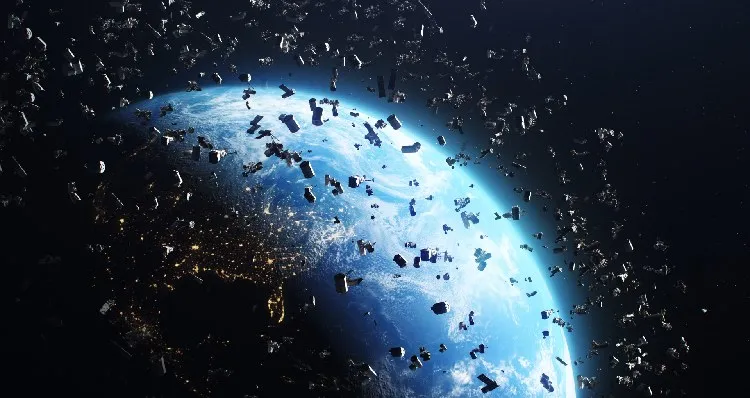Kessler Syndrome, named after the NASA scientist Donald Kessler, refers to a scenario in which space debris collides and creates a chain reaction of further collisions. This cascade effect could lead to a dramatic increase in the number of debris orbiting Earth, potentially rendering low-Earth orbit (LEO) unusable for satellites, spacecraft, and future missions. The growing concerns around space debris, the risk of collisions, and the limited solutions to mitigate this problem have led scientists to warn about the potentially catastrophic impacts on the future of space exploration.
Understanding Kessler Syndrome
Kessler Syndrome hypothesizes that the density of objects in orbit will reach a critical point where each collision produces additional debris, which then causes further collisions. The process is self-perpetuating, and the amount of debris in space could grow exponentially, making the environment hazardous for spacecraft. This could severely hamper satellite operations, communications, weather forecasting, and space exploration.
Origins and Causes of the Problem
The issue of space debris began alongside the first human missions into space. Satellites and spacecraft launched into Earth’s orbit leave behind remnants—defunct satellites, fragments from rocket stages, and even paint flecks that can travel at speeds up to 28,000 km/h (17,500 mph). These objects pose a risk to functional spacecraft and satellites.
Space debris has been growing since the beginning of the space age, with significant events, such as the destruction of the Russian satellite Cosmos 954 in 1978, adding to the debris problem. The increasing frequency of space launches, particularly with private companies entering the space sector, has further contributed to the accumulation of debris.
Why Kessler Syndrome Is a Growing Concern
The main concern with Kessler Syndrome is the rapid multiplication of debris. Even a small collision could produce thousands of fragments, many of which would be too small to track but large enough to cause catastrophic damage. This can lead to a scenario where human activity in space becomes nearly impossible. If the debris density grows high enough, it could become dangerous for future missions and satellites, affecting both commercial and governmental space endeavors.
Impact on Space Operations
- Communication and Navigation: Most global communication systems rely on satellites in low-Earth orbit. As the debris field grows, these systems could be disrupted or destroyed. Navigation technologies, such as GPS, which depend on satellites, could also face interference, affecting everything from personal navigation devices to international aviation and military operations.
- Space Exploration: Future exploration missions, such as those to Mars, could also be jeopardized if space debris affects the launch and travel paths of spacecraft. With manned missions becoming a reality, safety in space is of utmost importance, and the increasing debris field presents serious risks to astronauts.
- Satellite Damage: Every year, hundreds of satellites are launched into space. Even small debris particles can cause significant damage to these expensive pieces of equipment. The possibility of even larger collisions increases the risk of total mission failure, which could result in the loss of crucial infrastructure.
Solutions and Mitigation Efforts
Given the potential catastrophic consequences of Kessler Syndrome, efforts are underway to find solutions. These efforts include:
- Active Debris Removal: One solution being considered is the active removal of large debris from orbit. Various concepts for this involve using robotic spacecraft equipped with capture mechanisms or harpoons to remove defunct satellites and large debris pieces.
- Improved Satellite Design: Satellite designers are working on creating more resilient spacecraft that can withstand smaller debris collisions. Additionally, some newer satellites are designed to deorbit themselves at the end of their operational life, reducing the risk of contributing to space debris.
- International Cooperation: Global cooperation is essential to address the growing space debris problem. Spacefaring nations must collaborate on debris-tracking technologies, debris removal strategies, and regulations governing the space environment.
- Innovative Technologies: Several new technologies are being explored to address the debris problem. These include laser systems capable of removing small debris, electromagnetic “tethers” to slow down and deorbit objects, and net-based systems to capture larger debris.
- Space Traffic Management: Just as air traffic is carefully regulated, space traffic management is being developed. This involves tracking objects in orbit, predicting potential collisions, and ensuring spacecraft avoid high-risk areas.
The Long-Term Implications
The long-term implications of Kessler Syndrome are far-reaching. If the debris problem continues unchecked, it could render certain orbits too hazardous for use. The cost of space exploration and satellite operations could increase exponentially as agencies and private companies attempt to mitigate the risks of collision. The ability to expand human presence in space—whether through space tourism, lunar colonies, or missions to Mars—could be significantly limited by the growing debris field.
Preventing Kessler Syndrome
To prevent Kessler Syndrome, global cooperation, innovation, and strict regulation will be essential. The solution is not simply technological but also requires strong international governance to set rules for satellite launches, space traffic management, and debris mitigation. Without proper actions, space could become increasingly dangerous and inaccessible, putting the future of human space activities at risk.
Kessler Syndrome presents a real and growing threat to the future of space exploration. As more satellites are launched and space traffic increases, the risk of collisions and the cascading effect of debris is higher than ever before. Immediate steps must be taken to address this challenge, including active debris removal, satellite design improvements, and international collaboration. The future of space exploration, communications, and even global security could depend on how effectively humanity manages space debris in the coming decades.
As space becomes more crowded, the protection of Earth’s orbital environment is essential to ensure that space remains a viable domain for future generations of explorers, scientists, and innovators. The need to act is clear, and the consequences of inaction are too great to ignore.









